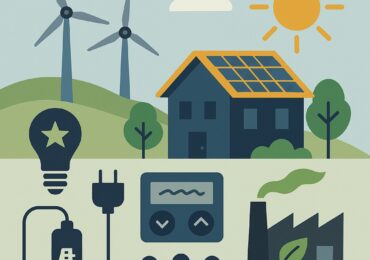
Why Clean Energy Matters Now More Than Ever
Across the globe, families and businesses are recognizing that reliable, affordable clean energy is a necessity, not just an ideal. Technological advancements, shifting regulations, and growing environmental awareness support the momentum towards integrating greener energy sources. The rise of companies like Indra Energy reflects how consumers have more choice and responsibility than ever before in deciding how their homes and workplaces are powered. People are asking tough questions about their electricity bills and seeking alternatives that make sense for their budgets and align with their values about environmental stewardship. In 2023, clean energy investments surged, with individuals and organizations backing solar, wind, and green natural gas solutions. This trend signifies a permanent shift in the energy landscape, as communities are experiencing the effects of climate change. Severe storms, wildfires, and heat waves highlight the need for action, driving consumers to seek sustainable options and making clean energy a mainstream concern with real-life urgency.
Simple Choices You Can Make Every Day
Clean energy can be achieved at home through simple changes such as replacing incandescent light bulbs with ENERGY STAR-rated LEDs, reducing lighting energy consumption by up to 75%. Replacing outdated appliances with ENERGY STAR models can result in financial savings and consistent energy conservation. Unplugging idle electronics and chargers can also eliminate “phantom” loads, which account for 5% to 10% of total home energy use. Maximizing daylight by opening curtains instead of artificial lights can also help save energy. Transitioning to a smart thermostat offers automatic adjustments for comfort, reduced heating and cooling, and can save the average home hundreds of dollars annually.
Renewable Electricity: What Are Your Options?
Renewable energy sources like solar, wind, and hydropower are becoming more accessible to more people. Electric utilities and independent suppliers now allow customers to choose how much of their power comes from these sources, allowing them to support clean energy growth without changing their electricity usage or household systems. Large-scale solutions like rooftop solar can lead to significant savings, especially as installation costs drop and resale home values rise. Community solar programs, which allow renters and apartment dwellers to buy into shared solar farms, are opening the doors to inclusivity, encouraging everyone, from low-income households to businesses, to participate in the clean energy economy.
Green Natural Gas and Its Growing Role
Green natural gas, or renewable natural gas, is a promising solution for decarbonizing urban infrastructure by capturing methane from organic matter, such as landfills, food processing plants, and livestock operations. This biogas is then cleaned and incorporated into the existing gas network, reducing a portion of the conventional supply. Blending green natural gas with traditional gas can be an intermediate step without costly overhauls, especially in colder climates where natural gas heating is standard. This initiative complements electrification and stimulates new business opportunities for local farms, waste management sectors, and tech startups focused on methane capture and processing.
Cutting Costs While Cutting Emissions
New research indicates that greener energy doesn’t always come at a higher cost for most consumers. Weatherizing your home can save between 10% and 25% on annual energy spending. Energy efficiency measures are one of the fastest ways to reduce costs and emissions. Rebates and incentive programs, such as state grants for window upgrades and utility rebates for high-efficiency furnaces, help absorb upfront fees and make advanced energy solutions accessible. Bundling small changes into a single project can deliver results quickly. Smart energy investments, even simple ones like programmable thermostats, tend to pay for themselves within a year or two, offering continuing savings.
Community Programs Making a Difference
Grassroots movements and community-led initiatives drive innovative energy solutions, such as neighborhood solar group buys and bulk buys for efficient appliances. These methods result in lower per-unit costs and higher installation rates. Individuals can also build camaraderie and shared purpose by joining local energy co-ops or participating in utility-sponsored programs. These approaches help close the gap between intention and real-world impact, promoting stronger neighborhood ties and empowerment. Overall, these community-based approaches are crucial for achieving sustainable energy solutions.